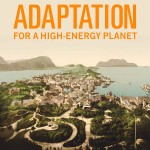Implementing Climate Pragmatism
Program Areas – Sustainability, Development
Adaptation for a High-Energy Planet
In the winter of 2015, the world community agreed in Paris on a framework for lowering carbon emissions in the coming decades. This progress, though laudable, offers little comfort to the billions of people around the planet still vulnerable and exposed to the risks of extreme weather and climate change. Even if emissions magically dropped to zero today, there would still be a massive human suffering and death due to maladaptation to environmental challenges like droughts, floods, hurricanes, and wildfires.
In popular discussions, climate risks are discussed almost exclusively in terms of hazards—stronger and more frequent hurricanes, floods, and droughts, for example. But scholars agree that most of the impact of extreme weather and disasters is better considered a result of exposure andvulnerability—cities on shorelines, farms in floodplains, poor and isolated communities in urban areas, and how prepared these places are for the hazards they face no matter how adequately the world deals with climate change. No less a respected scientific body than the Intergovernmental Panel on Climate Change (IPCC) finds that increasing losses from extreme weather and disasters are overwhelmingly dependent on these dynamics.
This new report from Arizona State University’s Consortium for Science, Policy & Outcomes and The Breakthrough Institute calls for an improved framework for climate adaptation in the 21st century. The goal laid out in Adaptation for a High-Energy Planet is simple and can be supported regardless of views about global climate risk: reduce the number of deaths caused as a result of extreme weather and disasters every year, while still accelerating modernization and low-carbon growth on an increasingly high-energy planet. This requires innovative, pragmatic approaches to strengthening climate resilience.
Fortunately, there are good adaptation practices in place today, and lessons to learn from them. From crop development in Nepal to cyclones in India to energy access in sub-Saharan Africa, modern policies and technologies show how to improve society’s resilience to extreme weather and disasters. The report highlights these successful adaptations, connects them to robust social and economic development efforts, and explores what they mean for helping communities to thrive in an ever-changing world.
Read the full report here.
